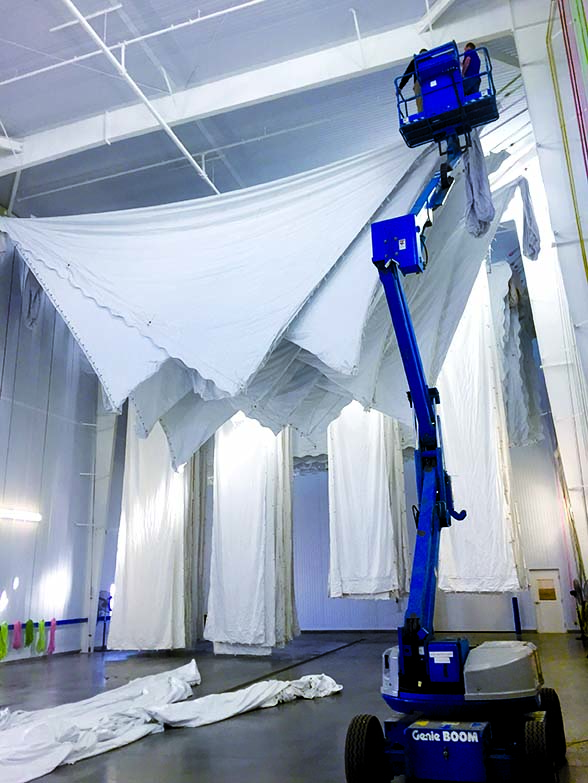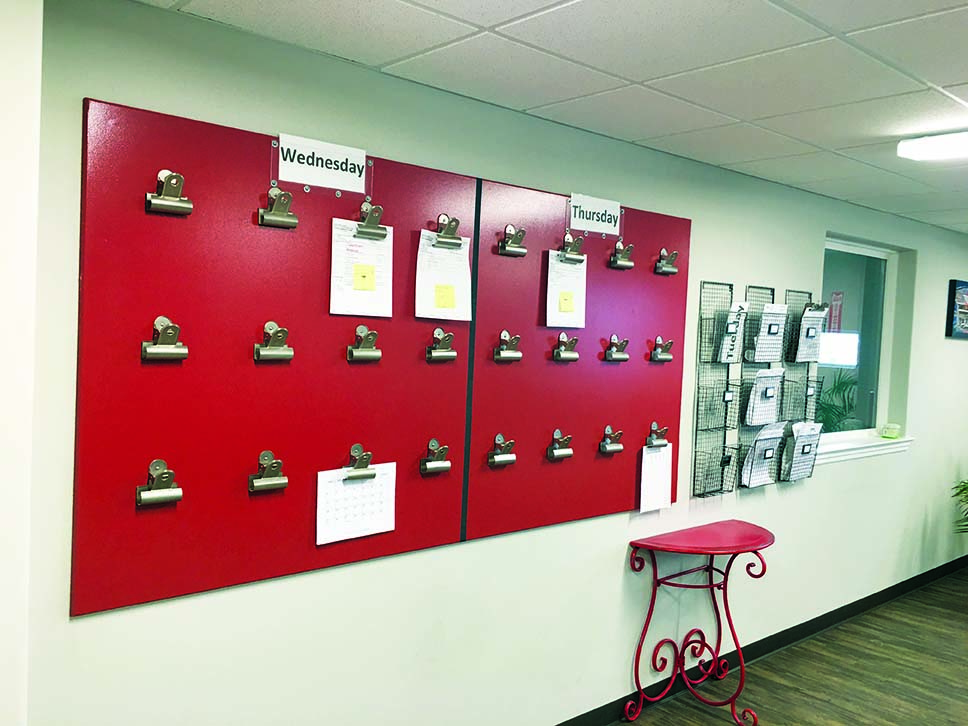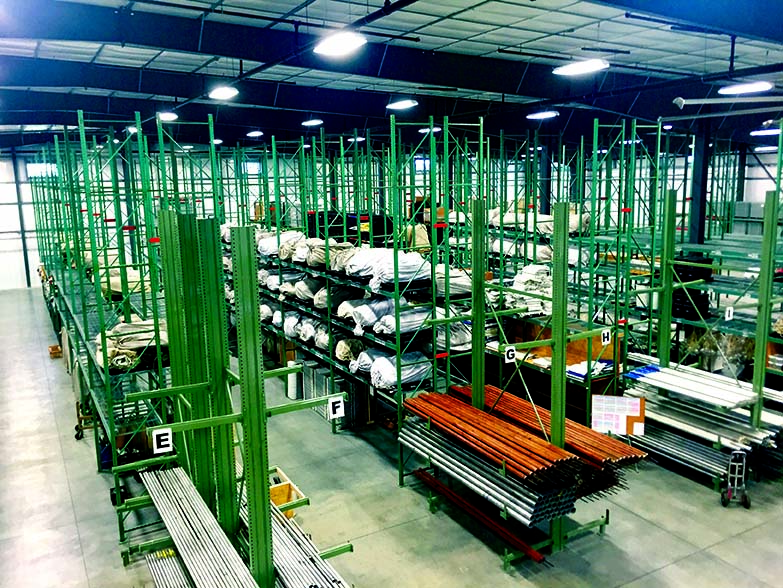
Today’s warehouses are no longer just for storage. From being a showroom of products to providing a space for drying operations to housing all facets of inventory, today’s warehouses are multipurpose spaces that require well-defined organization and management to keep processes streamlined and efficient.
Dan Farrell, general manager at Marquee Event Rentals, says a big challenge in the event business is keeping the most relevant inventory easily accessible to maximize efficiency.
“Design trends come and go, with sales promoting new products and clients striving to stand out,” Farrell says. “The warehouse space has to evolve with these changes. If not, we find ourselves stumbling through obsolete inventory to move new product.”
Another challenge is designing the warehouse layout to allow inventory rotation. If this process is not a priority, companies find themselves with inconsistent turns with non-serialized inventory.
“I think that storage is a dangerous way to describe a modern warehouse. It implies a place of stagnation,” says Jason Bader, managing partner of The Distribution Team. “If the entity is in the business of selling products, they need to consider the warehouse to be a place of perpetual motion. The longer things sit on the shelf, the more likely bad things occur—damage, theft, obsolescence, etc.”
Organization is key
Daryl Sensenig, owner of Tents for Rent, uses his warehouse for washing, drying, repair, and storage of tents and other rental items. One of his company’s biggest challenges is keeping things orderly and organized.
Sensenig recommends labeling everything and requiring everyone to be responsible for keeping the warehouse organized and neat. “Also put signs showing the location of items in each aisle. Lay out the warehouse in a way that is easy to understand,” Sensenig suggests.
Bader agrees that if he were to identify the biggest source of frustration for warehouse owners and workers, he would have to say that “can’t find it” ranks the highest. When people can’t find something, they tend to buy another one. This can be a perpetual hit to profitability.
“I would like to see people invest in a solid bin locating system tied back to an ERP [enterprise resource planning software] so that anyone in the organization can quickly locate an item they require,” Bader says. “Without a locating system, we are subject to the person who knows where everything is—probably because they put it there. If said person and a bus meet and the bus wins, we have just lost our product locating system. Setting up the system can be laborious, but it will pay great dividends in the long run.”

Tech tools and labor
The current labor shortage can cause unforeseen challenges in the organizational structure of a warehouse, as new hires struggle to learn where to find products as well as where to stock them. To offset these challenges, Farrell recommends that companies have a written training plan for new hires and ensure department supervisors follow through with that training.
“The more detailed and structured a training program is, the better results you will get from your new hire investment,” Farrell says. “Creating a labeling system in warehouse departments with picture identification of products on racking also is a great way to provide on-the-job education for new employees. Accountability through supervisors and managers to sustain the processes is key.”
Bin locating is a must to help new associates locate products quickly. As Bader explains, think of a bin location as a street address. Where does the product live? Going deeper into the tech realm, warehouse management systems (WMS) use barcodes and scanners to help associates locate and pull the correct product off the shelf. The WMS relies on the bin location to direct the picker to the correct shelf or “bin,” and the scanner verifies that the correct item has been picked. WMS technology can also be used to make sure that certain items are grouped together for a customer order or project application. This allows the associate to pick several orders in one pass through the warehouse.
Another labor-saving method of managing inventory is through radio frequency identification, or RFID, tagging. At Marquee Event Rentals, staff have used and researched several RFID systems for the warehouse. Farrell believes that RFID technology is an excellent tool to use with event rental inventory.
“In general, people are inconsistent with counting, and our business is all about counting,” Farrell says. “If systems like RFID and barcoding are used to eliminate those inconsistencies, inventory control, loss prevention and labor will all be improved.”
Cycling “dead” inventory
Warehouses are notorious for becoming a hoarder’s paradise, particularly at companies that rent products like tents. Farrell has been through countless warehouses and says they all seem to have this in common.
“[Many] companies are natural pack rats, and it is important to assign inventory personnel to monitor this situation. ERP software should identify slow-moving inventory, and steps should be taken a few times per year to dispose of that inventory through sales networks, auctions or social media outlets,” Farrell says. “Dead inventory does not produce revenue yet takes up valuable warehouse space.”
In inventory management there is a concept called “hits.” A hit refers to a transaction against a particular stock-keeping unit (SKU) within a 12-month period of time. A quantity of 10 or 100 is each counted as one hit. The reason Bader evaluates an item over 12 months is because he wants to eliminate seasonality.
“When we are looking at the popularity of our stocked products, we simply count the number of hits each SKU has accumulated and rank accordingly. The items at the top of the list are the items our customer base loves and we should invest more heavily in,” Bader says. “The items near the bottom of the ranking are less popular and should be evaluated for potential discontinuation. For a rental house, they need to draw their line in the sand and consider discontinuing items near the bottom of the rank. If an item hasn’t sold six times in a year (six hits), should we keep our capital tied up in it? Could we liquidate this low-hit inventory and reinvest in higher hit products?”

Safety first
Among the most common hazards warehouse workers are likely to incur are slips, trips and falls, as warehouses often have uneven surfaces and very little signage. Accidents can also occur due to inadequate footwear or poor lighting. These incidents often lead to worker’s compensation claims that can not only increase a company’s insurance premiums but trigger a visit from the Occupational Safety and Health Administration (OSHA).
But many workplace accidents are preventable, either through staff training or by taking preemptive action to reduce common risks. Another way to prevent workplace injuries is to implement policies surrounding where items are stored. As Bader explains, strains and severe sprains are often caused by where frequently accessed products are placed in a warehouse. “They can also occur when we place heavy objects above or below the ‘strike zone’ (from shoulders to knees) of our picker. If we change the placement of frequently accessed products, or heavy products, to the strike zone, we can eliminate certain repetitive motion injuries.”
The best way to reduce injuries is to help warehouse associates develop a “safety sense” for themselves, enabling them to recognize dangers. But, of course, repetition is key.
“I have found that weekly huddles, about 30 minutes, work well,” Bader says. “During the huddle, invite an associate to give a five-to-seven-minute talk on a safe working practice. When a manager presents, it will have less impact. When a peer shares, the team tends to pay better attention. When the task is rotated around to each associate, they tend to become more invested in the message.”
Maura Keller is a freelance writer based in Plymouth, Minn.
 TEXTILES.ORG
TEXTILES.ORG


